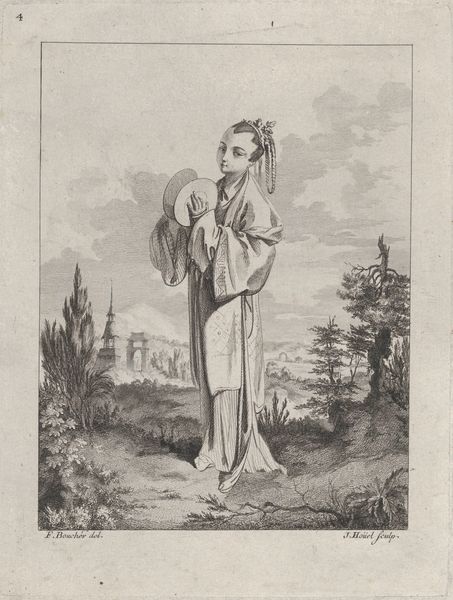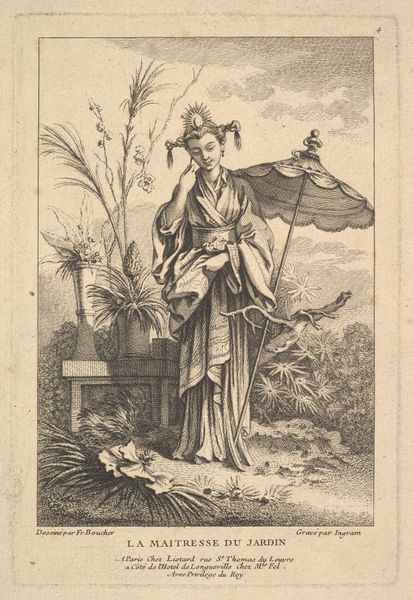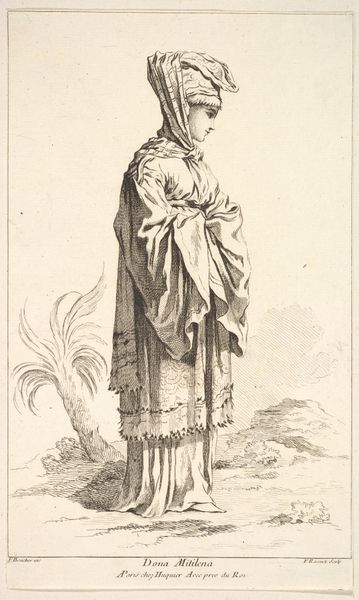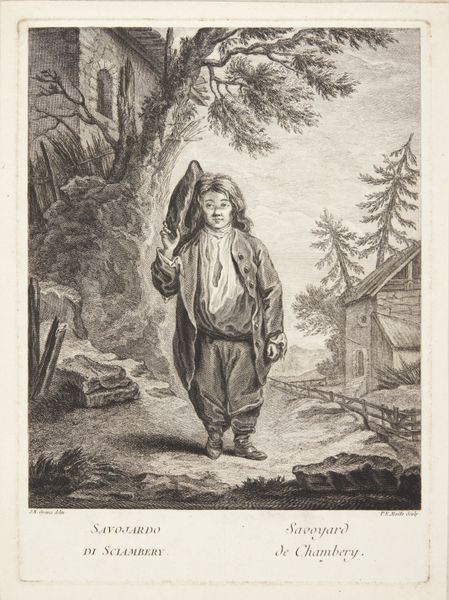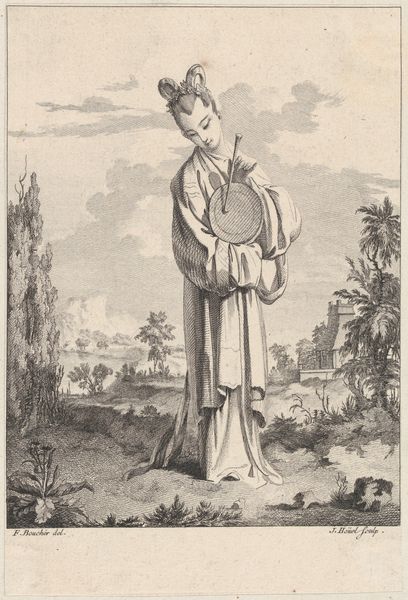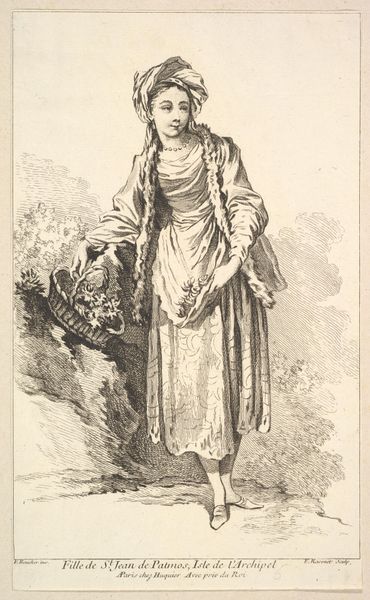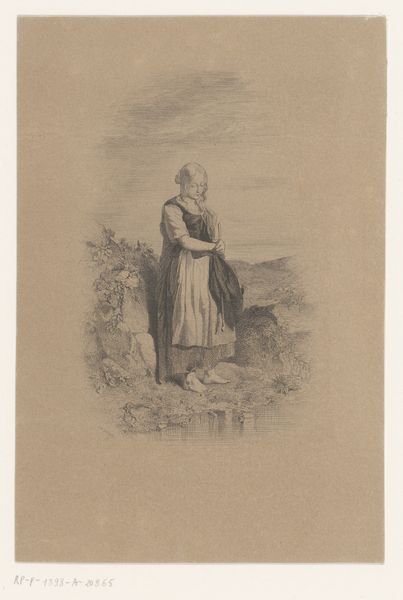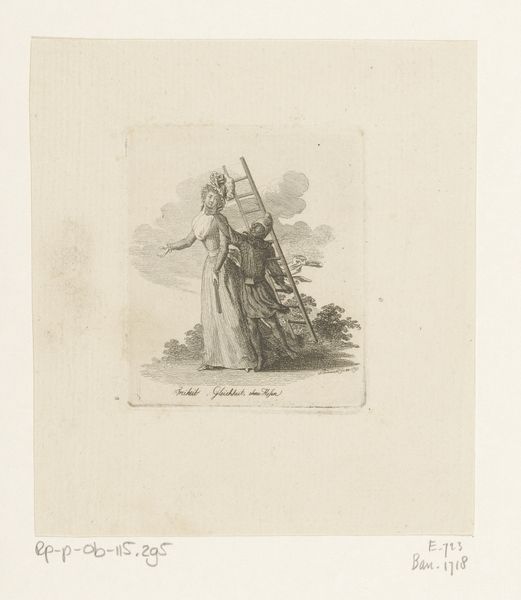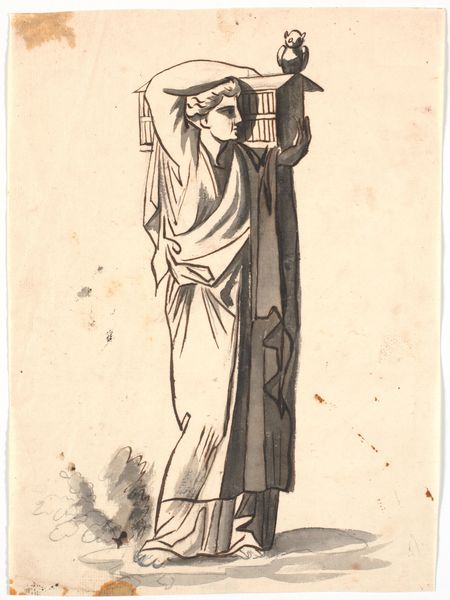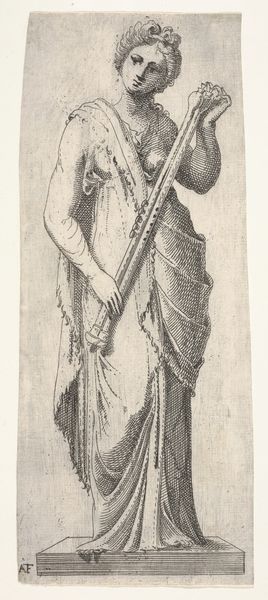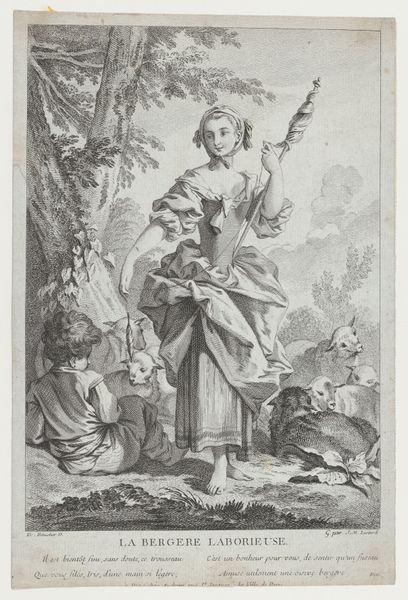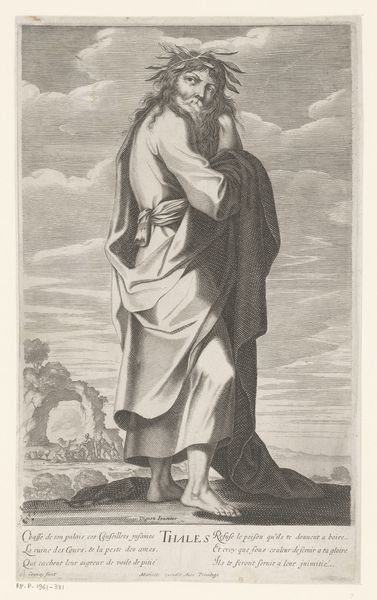
Chinoiserie with a woman playing the mouth organ, from Suite de Figures Chinoises. . .Tiré du Cabinet de Mr. d'Azaincourt (Series of Chinoiserie Figures. . .From the Chambers of Mr. d'Azaincourt), plate 3 1755 - 1776
0:00
0:00
drawing, print, engraving
#
portrait
#
drawing
# print
#
landscape
#
engraving
Dimensions: Plate: 9 in. × 6 13/16 in. (22.8 × 17.3 cm) Sheet: 13 11/16 × 10 1/4 in. (34.8 × 26 cm)
Copyright: Public Domain
Editor: This is "Chinoiserie with a woman playing the mouth organ, from Suite de Figures Chinoises…", an engraving by Jean Pierre Louis Laurent Hoüel, dating from sometime between 1755 and 1776. The subject seems almost dreamlike, poised with her instrument. What strikes you about this print? Curator: What immediately grabs my attention is the suite's explicit purpose. The "Chinoiserie" reveals the production of fantasies—European fantasies constructed *around* China. What does the choice of engraving, a repeatable medium, suggest to you about the image's intended consumption and spread of ideas? Editor: I see what you mean. Engravings allowed for wide distribution and affordability, so these exoticized visions of China could reach a broader audience and perpetuate a certain narrative, perhaps. Curator: Precisely! Think about the materials: paper, ink, the engraver's tools. These are readily available European resources shaped into a product meant to satisfy a consumer desire for the exotic. How does the artist use these material means to present a concept of Chinese culture to a European viewership? Editor: The image itself reinforces a hierarchical viewpoint. It's not really *about* China, is it? It’s more about Europe's idea *of* China. Curator: Exactly. And consider who held access to these prints, and who would want them. Wealthier audiences sought these images and luxury goods precisely to assert social standing and an allegedly refined worldview, wouldn’t you agree? Editor: That's true. The image’s materiality makes visible how European desire shapes and distorts other cultures for its own consumption and social meaning. Curator: I find this approach invaluable in highlighting the labor and means required for such cultural fantasies to come into being and circulate within society. Editor: Thanks. Now I’m seeing how focusing on materials and production methods brings social context so vividly to life!
Comments
No comments
Be the first to comment and join the conversation on the ultimate creative platform.
